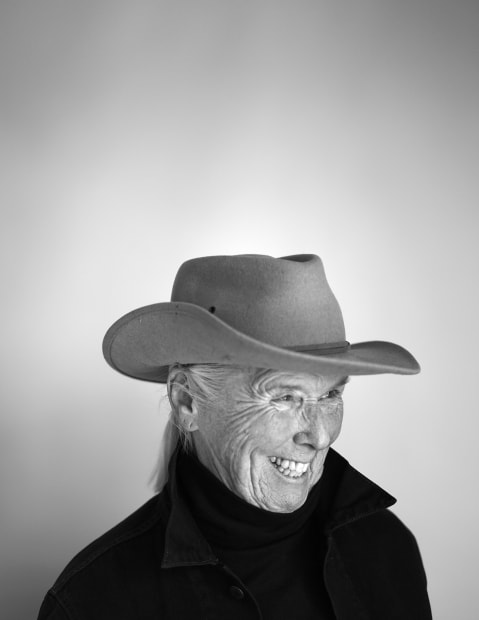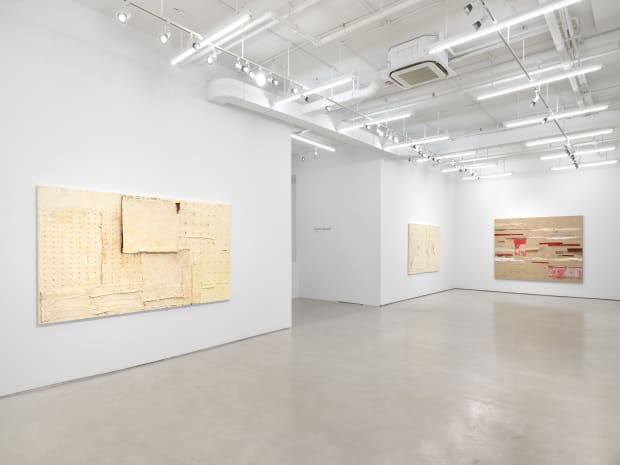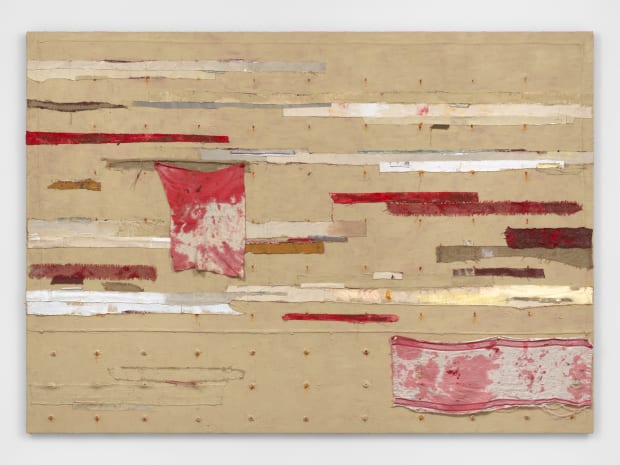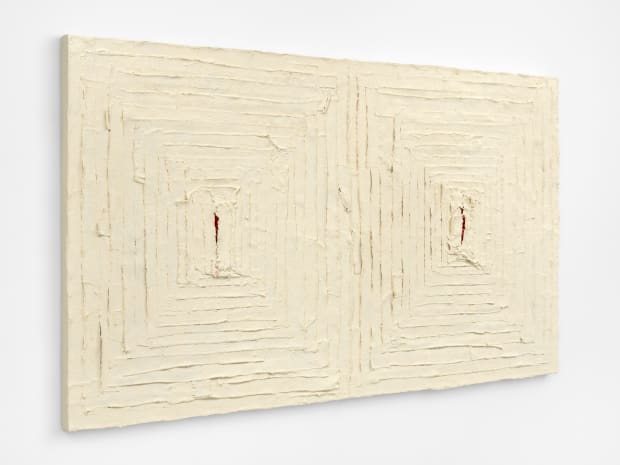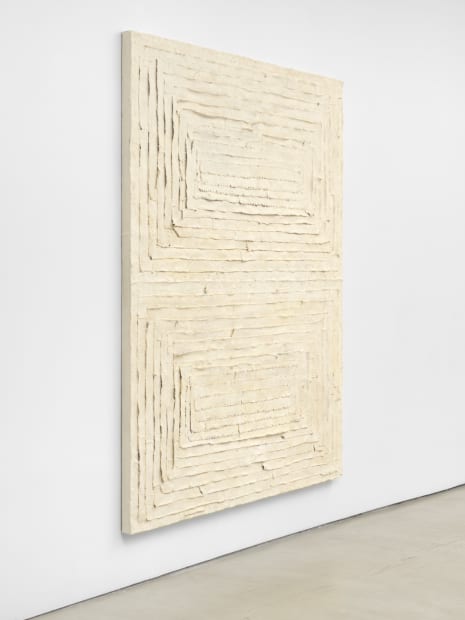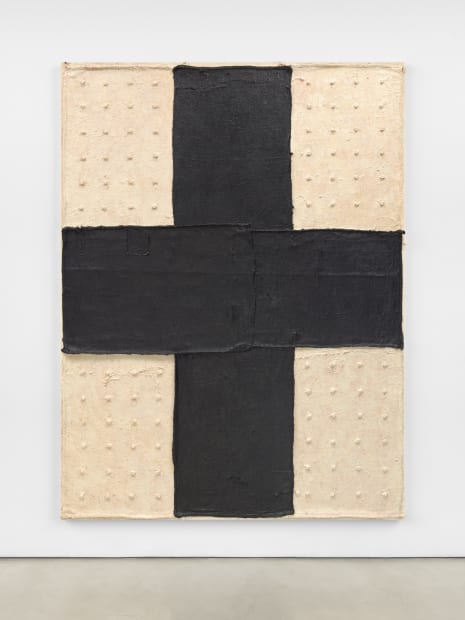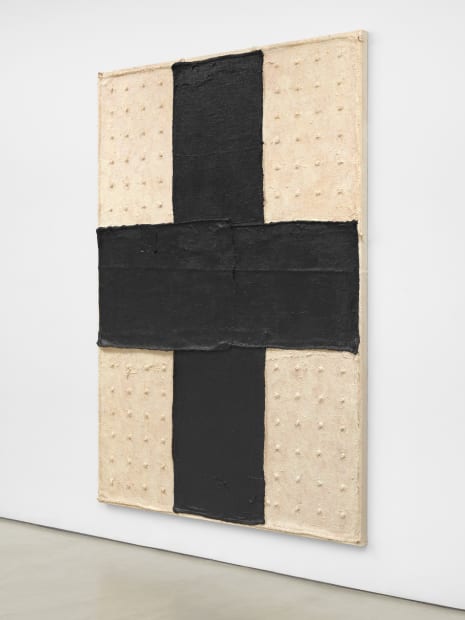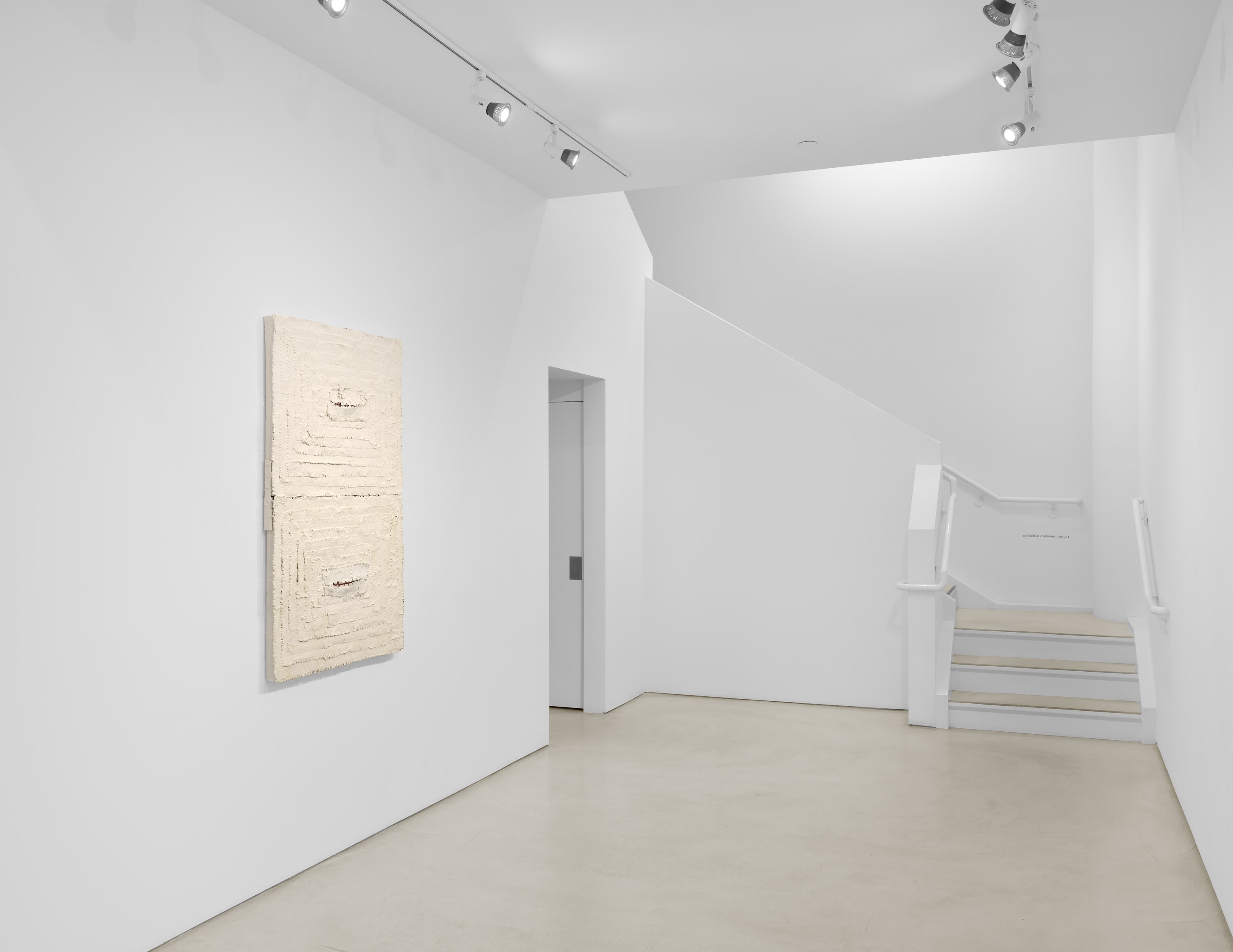-

Harmony Hammond, 2019. Photo: Clayton Porter.
-

Harmony Hammond: Crossings, installation view, Alexander Gray Associates, New York (2020)
-
-

Harmony Hammond: Crossings, installation view, Alexander Gray Associates, New York (2020)
-
A crossroads for meaning—where the metaphorical and formal meet and are transmuted—Hammond’s Cross Paintings and other recent works ultimately invite multiple readings rooted in the primacy of the canvas as a stand-in for the body. Presenting her paintings as sites where paint is transfigured into skin, the artist constructs surfaces that simultaneously express trauma and recovery. Recuperative paintings for this moment—wounded, yet protective—Hammond’s works embody vulnerability, strength, and defiance to resonate in a time of radical social change.
Harmony Hammond has exhibited nationally and internationally. In 2019, The Aldrich Contemporary Art Museum in Ridgefield, CT presented a fifty-year survey exhibition of her work, which traveled to the Sarasota Museum of Art, FL in 2020. Other institutions that have featured her work include: Whitney Museum of American Art, NY (2020); Museum of Contemporary Art Chicago, IL (2019); Des Moines Art Center, IA (2019); Brooklyn Museum, NY (2018, 1985); Museum of the City of New York, NY (2016); Museum Moderner Kunst Stiftung, Ludwig, Vienna, Austria (2016); Rose Art Museum, Waltham, MA (2015); National Museum of Women in the Arts, Washington, DC (2011); MoMA PS1, Queens, NY (2008); Vancouver Art Gallery, Canada (2008); and Museo de Arte Contemporaneo Internacional Rufino Tamayo, Mexico City, Mexico (2007), among others. Hammond’s work is in the permanent collections of the Art Institute of Chicago, IL; Brooklyn Museum, NY; Metropolitan Museum of Art, New York, NY; Minneapolis Institute of Arts, Minneapolis, MN; The Museum of Modern Art, New York, NY; National Museum of Women in the Arts, Washington, DC; New Mexico Museum of Art, Santa Fe, NM; Phoenix Art Museum, AZ; Wadsworth Atheneum, Hartford, CT; Walker Art Center, Minneapolis, MN; and Whitney Museum of American Art, New York, NY, among others. Her archive is in the permanent collection of the Getty Research Institute, Los Angeles, CA. She has received fellowships from the John Simon Guggenheim, Joan Mitchell, Pollock–Krasner, Esther and Adolph Gottlieb, and Art Matters Foundations, as well as the New York State Council on the Arts and the National Endowment for the Arts. Hammond’s book, Wrappings: Essays on Feminism, Art and the Martial Arts (TSL Press, 1984), is a foundational publication on 1970s feminist art. Her groundbreaking book Lesbian Art in America: A Contemporary History (Rizzoli, 2000) received a Lambda Literary Award and remains the primary text on the subject. In 2013, Hammond was honored with The College Art Association Distinguished Feminist Award. She received both the College Art Association's Women's Caucus for Art Lifetime Achievement Award and Anonymous was a Woman Award in 2014.
Below is a video of Harmony Hammond discussing her work.
-
-
-
 Harmony Hammond, "Chenille #7," 2018, oil and mixed media on canvas, 58 1/2 x 118 1/2 x 6 in (148.59 x 300.99 x 15.24 cm)
Harmony Hammond, "Chenille #7," 2018, oil and mixed media on canvas, 58 1/2 x 118 1/2 x 6 in (148.59 x 300.99 x 15.24 cm) -
-
-
-
-
 Harmony Hammond, "Double Bandaged Quilt #1 (Horizontal)," 2019, oil and mixed media on canvas, diptych: 57h x 104.5w in (144.78 x 265.43 cm)
Harmony Hammond, "Double Bandaged Quilt #1 (Horizontal)," 2019, oil and mixed media on canvas, diptych: 57h x 104.5w in (144.78 x 265.43 cm) -
-
-
-
-
-
 Harmony Hammond: "Crossings," installation view, Alexander Gray Associates, New York (2020)
Harmony Hammond: "Crossings," installation view, Alexander Gray Associates, New York (2020) -
-
-
 Harmony Hammond: "Crossings," installation view, Alexander Gray Associates, New York (2020)
Harmony Hammond: "Crossings," installation view, Alexander Gray Associates, New York (2020) -
-
